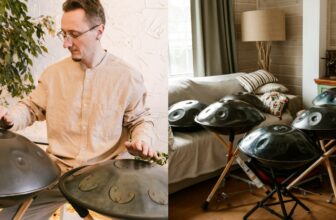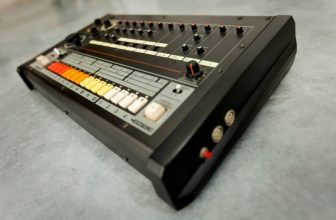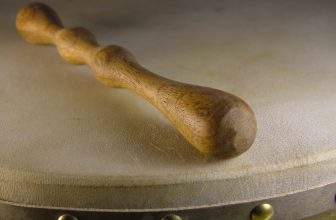The Waterphone (How it Works, What it Sounds Like, Where to Buy One)
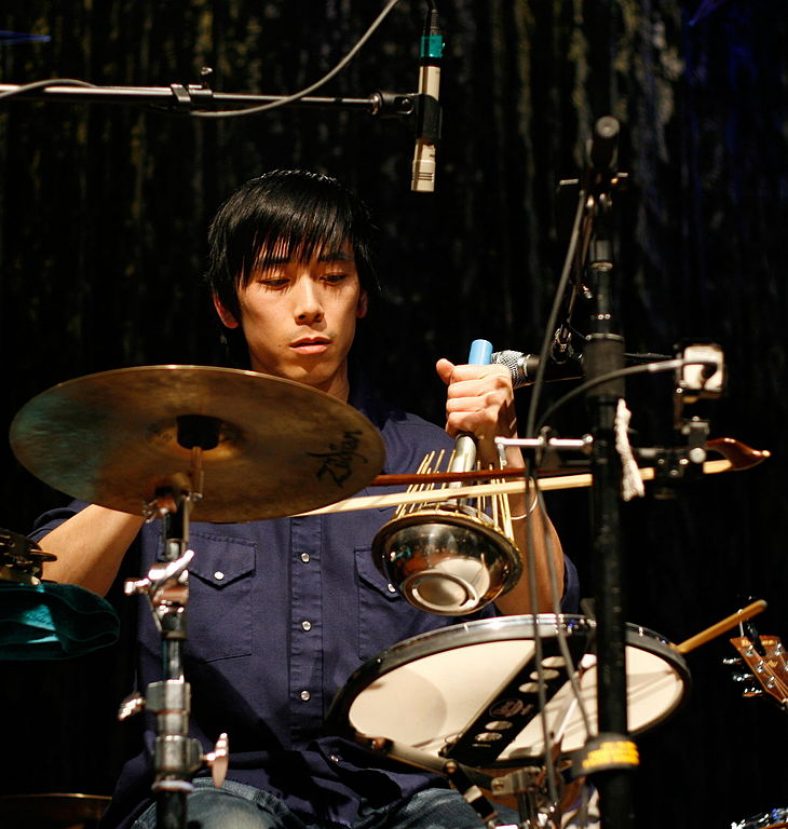
The Waterphone, invented by Richard Waters, is an intriguing and unique-sounding instrument that is made from a stainless steel resonator bowl with a spherical neck and a bronze pole. The resonator contains a little bit of water, resulting in an ethereal sound produced by the waterphone.
Even though people usually think that nobody invents new instruments, some people are always working on improving and meddling with existing ones trying to get that perfect sound they need. One of those people is Richard Waters, inventor of the waterphone.
Contents
How the Waterphone works
The waterphone is a peculiar instrument that consists of stainless steel wide bowls that have bronze rods attached to the sides of the bowl. These are then filled with water and create the sound by playing on the rods, with a bow, a mallet, or by plucking them with your fingers. The water that’s inside of the bowl allows for the sound to change when the water is being moved by shifting the sound but also for different sounds to be played depending on the place of the water.
The instrument has a big rod in the middle of it, through which you fill and empty the bowl with water and there you can hold or suspend your instrument on the cord. Also, you can play it when it just sits on the surface.
What a Waterphone sounds like?
The sound of the waterphone is a dreary, hollow sound similar to that of a cello or a violin, but louder and with more echo to it (thanks to the water inside and the size of this instrument). The rods on the instrument are not tuned to any scale, but are, in its makers’ words, tuned to a micro-tonal scale split between two diatonic scales, tuning the tonal rods against the primal tone of the diaphragms, resonator, and each other.
This means that you can get a whole lot of new, exciting sounds when playing this instrument as you can’t expect the same sounds over and over again just going up and down the scale. You can find some notes by ear and then mark those rods to use them specifically when you compose a piece, but you can’t expect to have a waterphone tuned exactly to standard scales as other instruments.
Where to buy a Waterphone?
Your best bet would be to purchase a waterphone from Thomann or from AquaSonic Waterphone Instruments. You can also find some Waterphones on Amazon but the quality may vary wildly.
You can find many different counterfeits, copies, and low-budget ones online. Several people are trying to sell these, but you should be aware that all of these copies are very badly designed and made. They are usually made out of low-quality metals, with fewer rods welded onto the instrument, giving you a lesser quality sound that is easily comparable if you have an original Waterphone next to one of these.
When and where was the Waterphone invented?
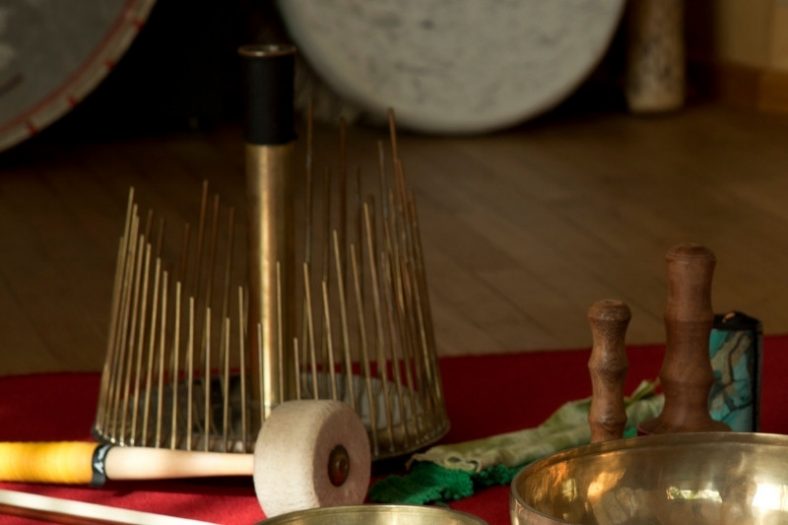
This instrument was invented by Richard Waters in California, USA in 1969. It was inspired by kalimbas or African thumb pianos. As you probably know, kalimbas are played by plucking thin rods and creating the sound in that way. Mr. Waters experimented with different types of kalimbas, welding the rods on the bowls, and then one day he filled the bowl with water together with his friend, and invented a whole new sound.
This model was then later on perfected, after a lot of experimenting with materials and ways in which it can be made and tuned. The final verdict was that the body should be made out of stainless steel and the rods out of bronze, as the materials with the best money/quality ratio and durable as well.
Why does the Waterphone sound scary?
The main use of this instrument is in music production, specifically movie soundtrack production. This is due to the really dreary, scary sounds you can get from the Waterphone, and horror movies are a perfect place for just such an instrument.
There are two main reasons why the waterphone sounds so scary. Firstly, there’s something odd to the ear of the listener when they listen to instruments that are not tuned to the standard scales. When you listen to music, you expect the sounds to hit those 12 notes you’re accustomed to in Western music since all of them have their own personal resonance and are all set apart identically from one another.
When you hear some notes that are out of those registers, you’re immediately baffled as to what is going on and are trying to get ahold of that mess.
Secondly, the use of water in this instrument allows for a very odd and sudden change in the sound, which is not available in the other instruments. Water carries the sound differently than the air and when in contact with vibrating metal around it, it will create a whole new bending of the sound, which is again not something you’re accustomed to.
When you combine that effect with the high-pitched, metallic sounds you get from playing this instrument, and years of usage in horror movies and generally scary scenes, you’ll immediately get the chills down your neck when you hear waterphone squeak and rumble.
Other names for a Waterphone
Even though the waterphone is the original name of the instrument, you can find it under several other names that have sprung up over the years. This instrument is also well known as the Ocean harp or AquaSonic waterphone, and you’ll maybe find it under those names for sale in your local store, but the name waterphone is the original one.
Summary
The waterphone was invented in California in 1969 by Richard Waters. It is a very unique instrument with an original sound that can be used in many musical genres from experimental rock music to ambient and electronica.
The sound of the waterphone can be described as a dreary, hollow sound similar to that of a cello or a violin but with more echo.
The whole body should be made out of stainless steel while the rods are out of bronze and it is played by playing on these rods either by using a bow or picking them with your fingers. You can also play it when it just sits on the surface.
Featured Image: Alex wong playing waterphone, CC BY 3.0

